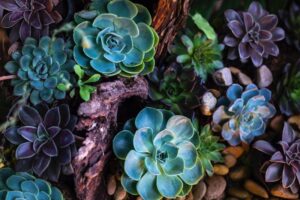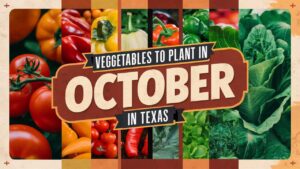In this guide guide, we will explore suitable vegetables, flowers, herbs, and landscape plants for this fertile time, with special attention to their temperature tolerances and ideal planting dates in Zone 6b.
Vegetables To Plant
In June, the transition from spring crops to summer crops is in full swing, making it an ideal time to plant a variety of vegetables that will bear fruit in the warm months ahead. Here’s a closer look at ten vegetables, tailored for success in Zone 6b.
Tomatoes
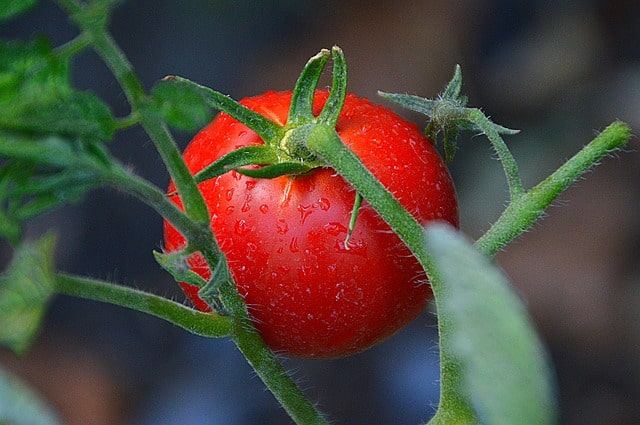
Tomatoes are a summer staple and love warmth, thriving in temperatures between 70°F and 85°F. In Zone 6b, the ideal time to transplant young seedlings is in early June after the danger of frost has passed. You can start seeds indoors 6 to 8 weeks before the last expected frost date (approx. mid-April in most areas) and then move them outdoors. Select a sunny spot with well-drained soil enriched with compost to optimize growth. Tomatoes are heavy feeders, so regular fertilization is essential for producing robust plants that yield a rich harvest.
Common varieties include beefsteak for large, juicy fruits and cherry tomatoes for bite-sized delights. Support your plants with cages or stakes to promote air circulation and prevent diseases due to moisture retention. With proper care, expect a bountiful harvest in late summer.
Cucumbers
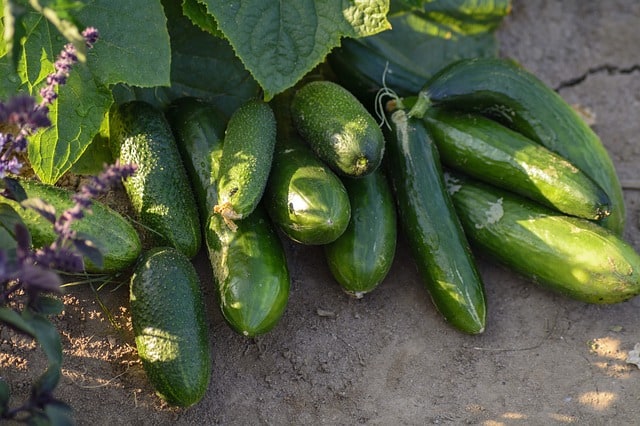
Cucumbers are quick to grow and are best directly sown into the ground when soil temperatures reach around 70°F. The typical planting window for cucumbers in Zone 6b extends throughout early June. They thrive in full sun and require regular watering to maintain moisture, especially during fruit development.
Space seeds about 1 inch deep and 12 inches apart in raised beds or garden rows. Consider trellising varieties to save space and improve airflow, which helps prevent fungal diseases. Cucumber plants usually start producing fruit within 50 to 70 days from planting, and harvesting them regularly will encourage more growth.
Beans
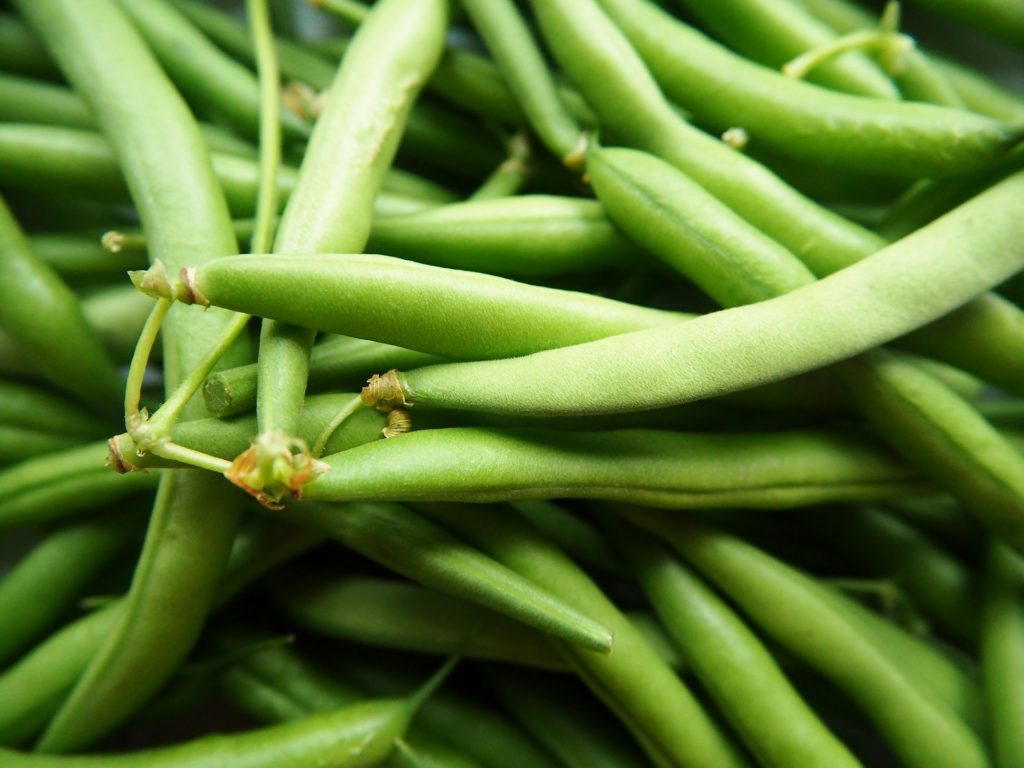
Beans, whether bush or pole types, can be directly sown in early June once the soil warms. They perform best in temperatures ranging from 70°F to 90°F. Bush beans can be sown every two weeks for a continual harvest, while pole beans require a trellis to climb.
Plant seeds about 1 to 1.5 inches deep and 2 to 4 inches apart. Beans not only provide delicious pods but also enrich the soil with nitrogen, making them excellent companions for other crops. Expect to start harvesting about 50 to 60 days after planting, depending on the variety.
Peppers
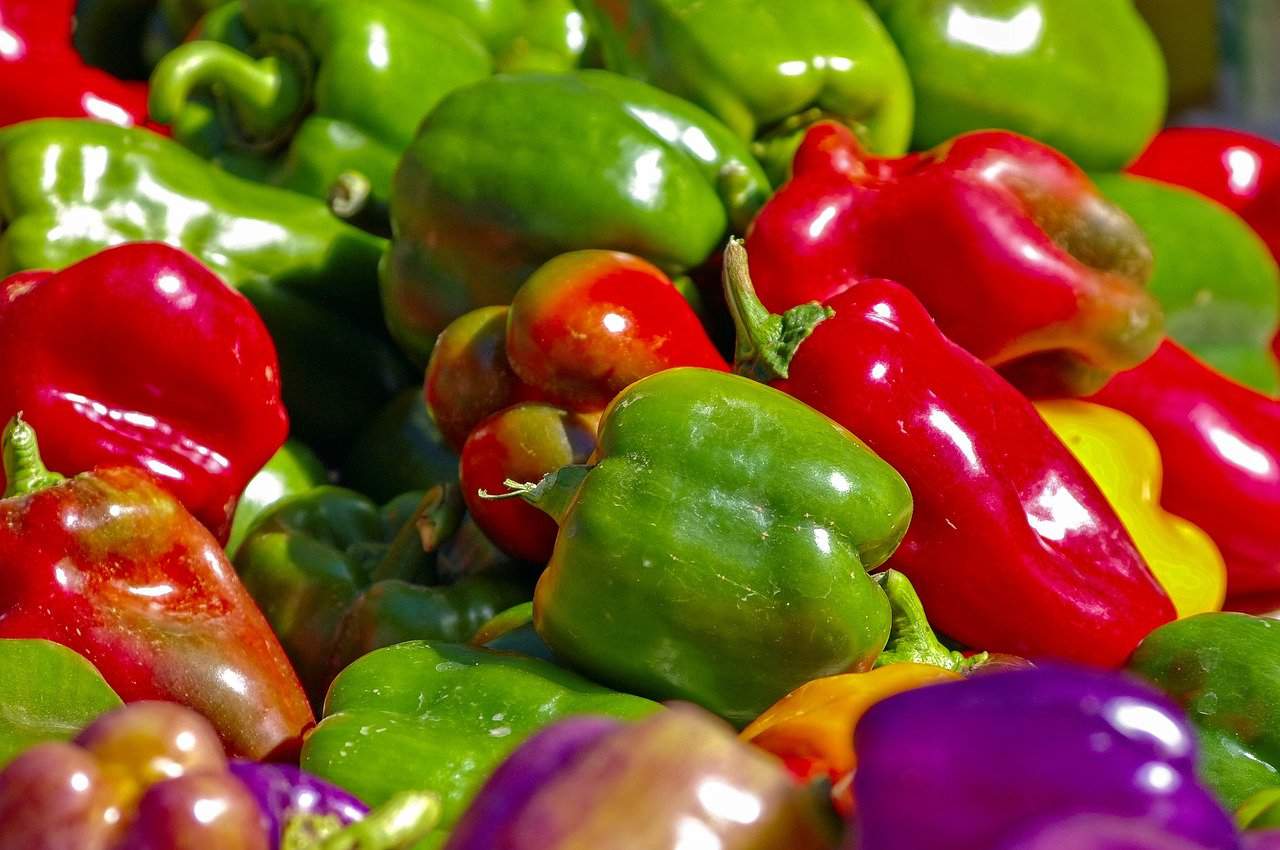
Peppers are sensitive to cold, thriving best in warm temperatures between 70°F and 85°F, which makes June a suitable time for planting seedlings outdoors in Zone 6b. They are usually started indoors 8 to 10 weeks before the last frost. When transplanting, ensure that night temperatures are above 55°F.
Prepare well-drained, nutrient-rich soil, and space peppers about 18 inches apart. Mulching helps keep the soil warm and retains moisture. With proper care, expect a flavorful harvest of bell peppers, jalapeños, or hot varieties in late summer to early fall.
Squash
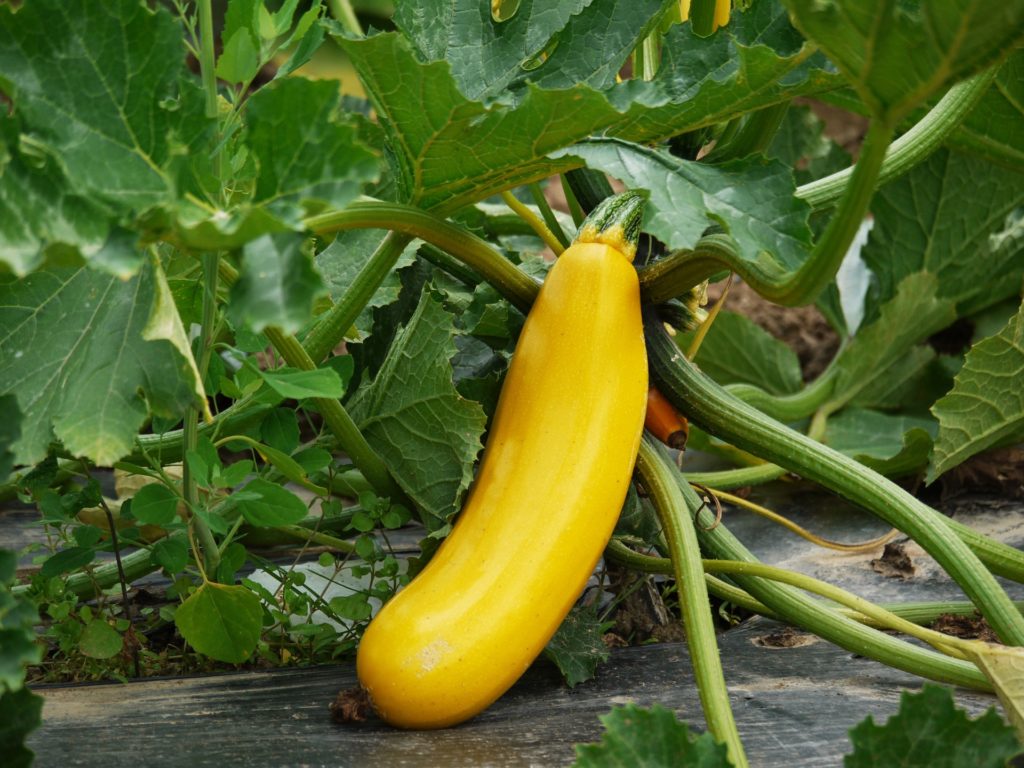
Summer squash, such as zucchini, can be directly sown into the ground in early June, preferring warm soil with a temperature of at least 65°F to germinate well. Seeds should be planted about 1 inch deep and spaced 2 to 3 feet apart, given their sprawling nature.
These plants thrive in full sun and abundant watering during dry spells. Squash can start yielding immature fruits within 50 to 60 days, making them quick producers. Regular harvesting not only ensures fresh vegetables but also encourages further fruit production.
Carrots

Though carrots are commonly planted in spring, late June offers an excellent opportunity for a second planting for a fall harvest. Carrots prefer cooler conditions, germinating best in temperatures between 45°F and 75°F. Sow seeds 1/4 to 1/2 inch deep and space them around 2 inches apart.
Keep the soil moist until the seeds germinate, which can take two to three weeks. Carrots can be grown over the summer and harvested in late fall when they have sweetened with cooler temperatures. They’re ideal for longer-term storage or fresh usage well into winter.
Beets
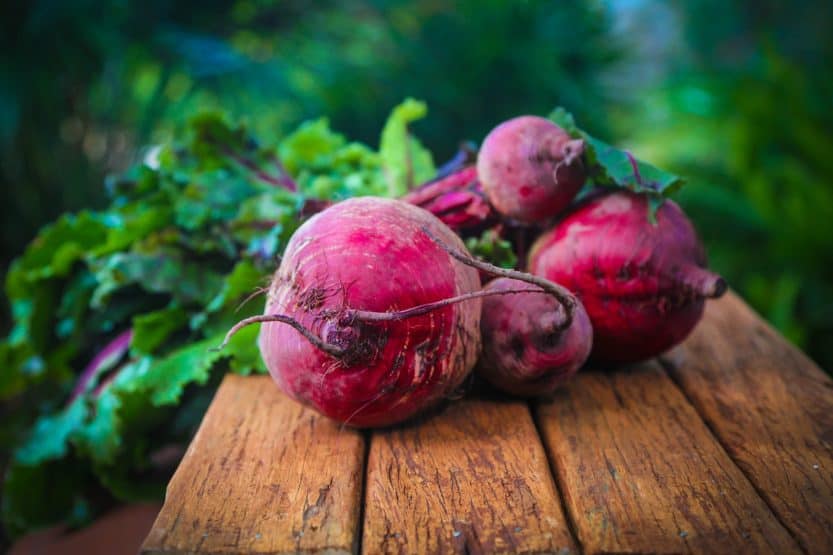
Beets can also be sown in late June for a fall crop. These root vegetables thrive in moderate temperatures, typically between 50°F and 75°F. Plant seeds about 1/2 inch deep with seeds spaced 1 to 2 inches apart.
Beets grow quickly and can be harvested for both their roots and greens. They develop their sweetness when harvested after autumn frost, making them a great choice for late-season gardening. Their vibrant color adds beauty to salads and dishes.
Lettuce
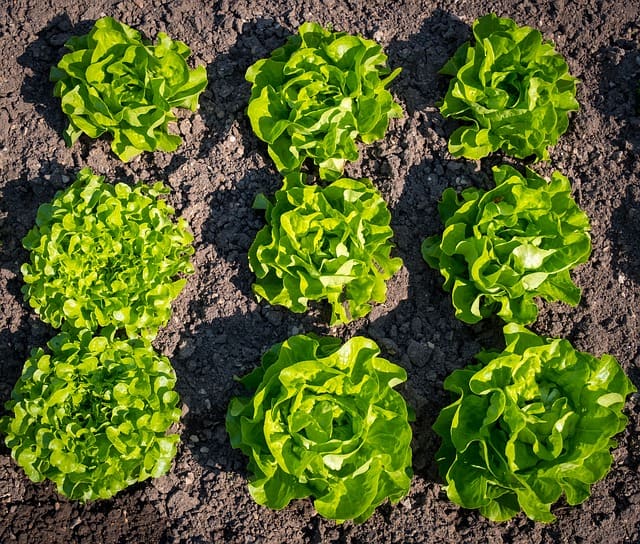
Lettuce is quick-growing and can be planted in June for a continuous harvest throughout summer. Optimal germination temperatures are between 60°F and 70°F. Seeds can be sown directly in the soil, spaced 6 inches apart.
Choose varieties that are particularly heat-tolerant, such as ‘Butterhead’ or ‘Iceberg’. Regular harvesting will stimulate growth and produce tender leaves. Lettuce grown in the cooler days of early summer can provide crisp salads and garnishes until the heat of late summer causes it to bolt.
Radishes
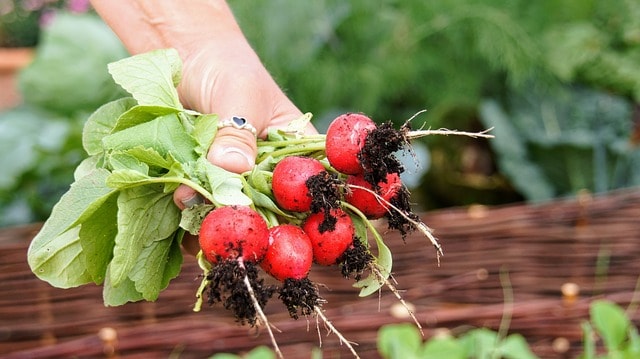
Radishes are one of the quickest vegetables to mature and can be directly sown in June. They prefer cooler growing conditions and germinate best in soil temperatures between 50°F and 70°F. Plant radish seeds 1/2 inch deep, spacing them 1-2 inches apart.
Many varieties can be ready for harvest in as little as three to four weeks, making them perfect for quick results. Their crunchy texture and peppery flavor make them ideal for salads, pickling, or just fresh snacking.
Corn
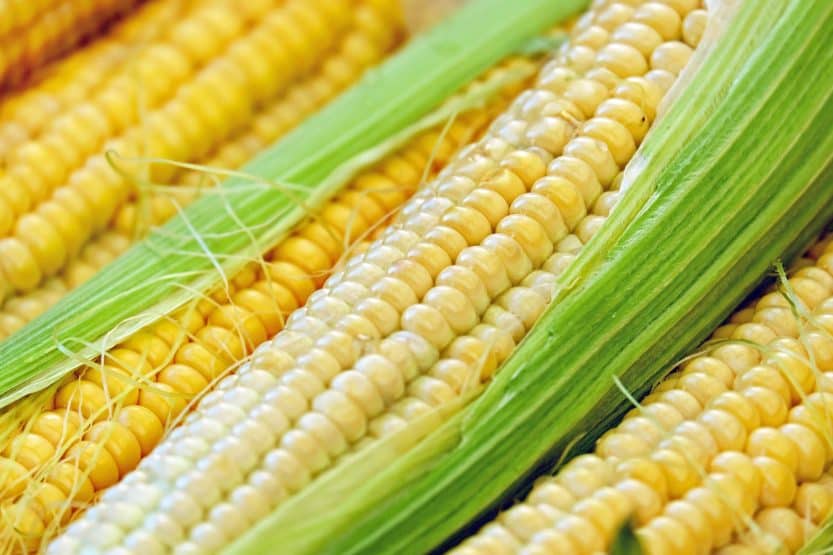
Corn should be directly seeded into warm soil in late May to early June, ideally when temperatures reach around 60°F. Space seeds 8 to 12 inches apart and plant in blocks of at least three rows to ensure proper pollination.
Corn thrives in full sun and prefers fertile, well-drained soil with consistent moisture. Varieties like sweet corn can be harvested in late summer, usually around 70 to 100 days after planting. The rewards of fresh corn on the cob are well worth the effort!
Flowers To Plant
June is also a prime time for planting a variety of flowers in Zone 6b. Flowers add vibrancy and life to gardens and landscapes while attracting pollinators. Here’s a detailed look at ten flowering plants suitable for this season.
Sunflowers
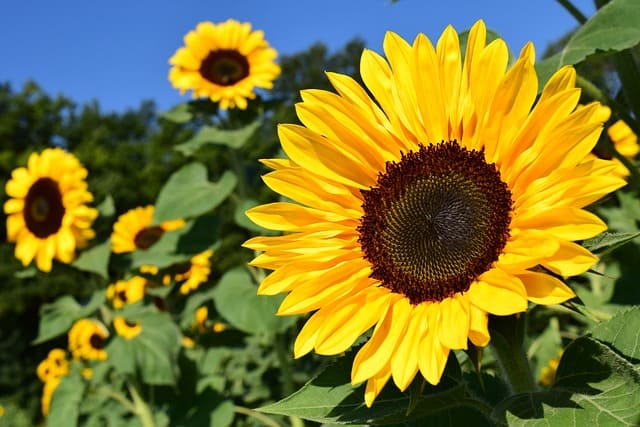
Sunflowers are vibrant, cheerful plants that thrive in full sunlight and tolerate a variety of conditions. Start sowing seeds directly in the garden in early June when the soil temperature is consistently above 60°F. Space seeds about 6 to 12 inches apart.
These hardy flowers can grow exceptionally tall (up to 10 feet) and offer spectacular blooms, making them a popular choice for gardens and cut flower arrangements. Plus, they produce seeds that attract birds and beneficial insects. Expect continuous flowering if they are kept well-watered.
Zinnias
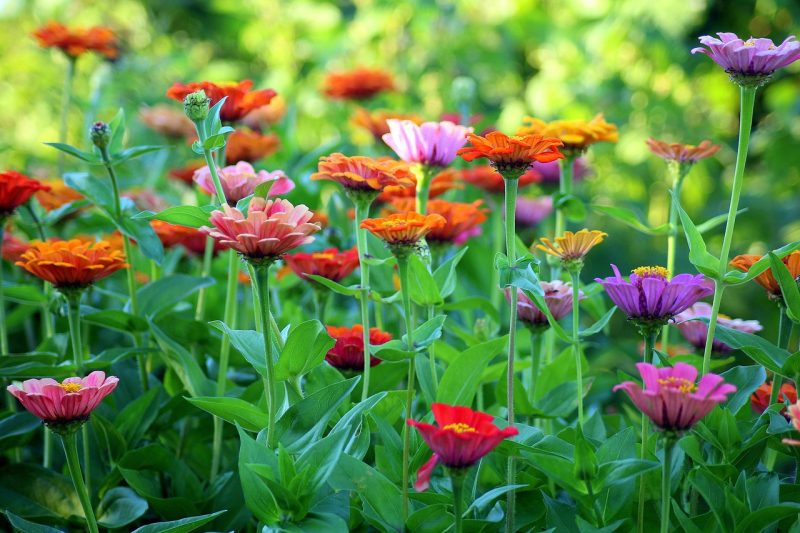
Zinnias are one of the easiest flowers to grow, blooming profusely from summer until frost. Plant them in well-drained soil in full sun starting in early June. Zinnia seeds can be sown directly into the ground with a spacing of about 12 inches apart.
These annuals are known for their vibrant colors ranging from red to yellow, pink, and purple. They attract butterflies and bees, making them a wonderful addition to perennial gardens or borders. Regularly deadheading spent blooms promotes further flowering.
Marigolds
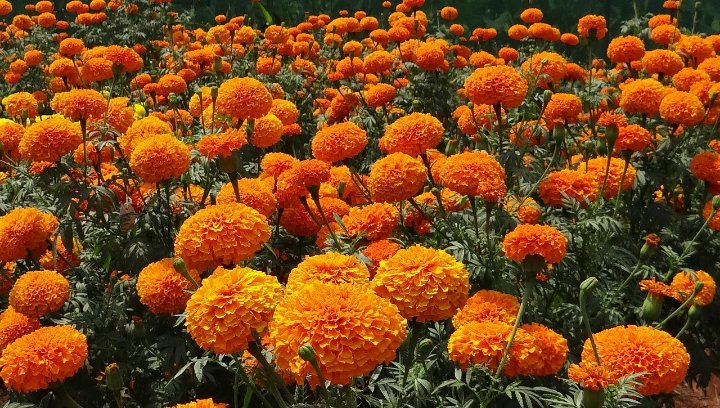
Marigolds are hardy annuals that thrive in sunny spots and are known for their pest-repellent properties. Plant them directly in the garden in June, spacing seeds about 8 to 10 inches apart in well-drained soil.
Their bright orange and yellow flowers not only brighten borders but also attract beneficial insects while deterring pests. Marigolds bloom throughout the summer, making them a favorite among gardeners for beds, borders, and containers.
Coneflowers
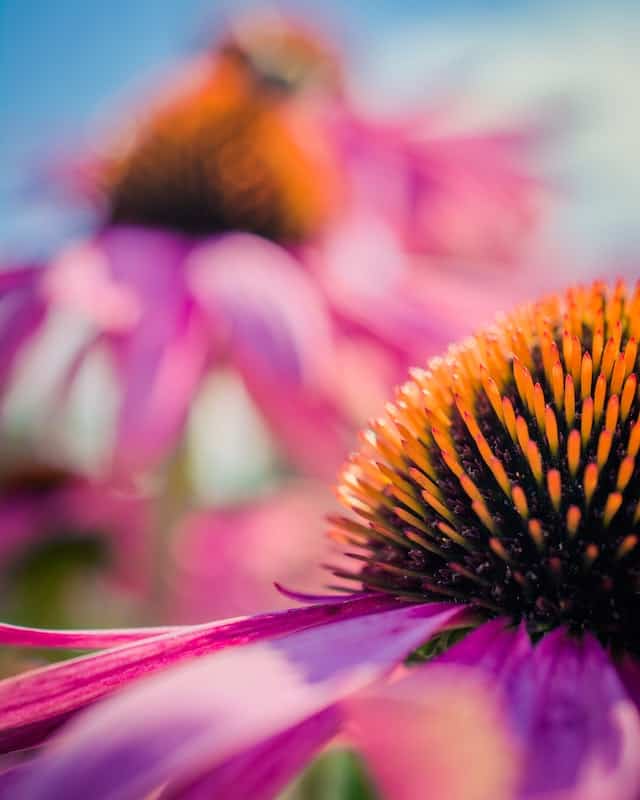
Coneflowers (Echinacea) are hardy perennials that thrive in sunny areas with well-drained soil. In June, you can plant potted coneflowers or sow seeds directly in the ground. They tolerate drought and poor soil and prefer temperatures between 70°F and 75°F for optimal growth.
The striking flowers are not only visually appealing, attracting butterflies and pollinators but have also been valued for their medicinal properties. They bloom from mid-summer to fall, offering persistent beauty in your garden.
Black-eyed Susans
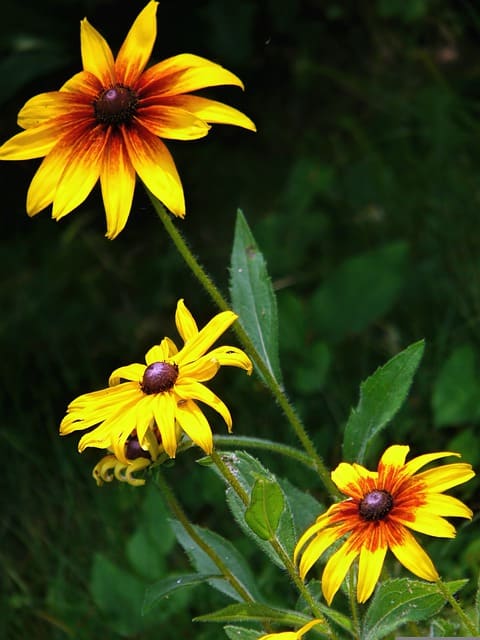
Black-eyed Susans (Rudbeckia) are cheerful perennials that thrive in sunny locations, tolerating a wide range of soil types. Plant them in June for vibrant yellow blooms featuring dark centers. They grow best when temperatures are around 70°F to 80°F, and ideally, they should be spaced about 12 to 18 inches apart.
These flowers expand quickly and require minimal maintenance, making them a favorite for low-care gardens. They’re also attractive to birds and butterflies, enhancing your garden’s ecosystem.
Cosmos
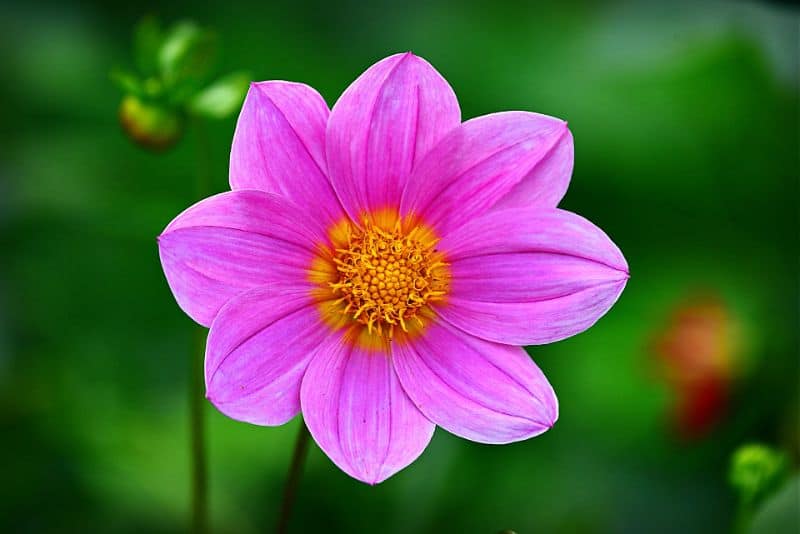
Cosmos are delightful, easy-to-grow annuals that produce a profusion of flowers in various colors and need full sun. They can be sown directly in the garden from early June onwards and prefer well-drained soil.
Their tall, slender stems sway beautifully in the breeze and attract bees and butterflies to your garden. For continuous blooming, deadhead spent flowers periodically, and they will flourish throughout summer, providing joy in borders and wildflower gardens.
Snapdragons

Snapdragons can be planted in June and do best in cooler, partially shaded areas with well-drained soil. While traditionally planted in early spring, you may still plant them in early summer in Zone 6b.
They thrive in temperatures ranging from 60°F to 75°F. These charming flowers provide structure and height in borders, and a variety of colors makes them suitable for formal or cottage gardens. Deadheading will encourage continuous blooms throughout the summer.
Petunias

Petunias are versatile annuals suitable for gardens and containers, offering bold colors and delightful fragrance. Plant them in well-drained soil with full sunlight starting in June.
These flowers can thrive in warm conditions, typically enjoying temperatures between 65°F and 85°F. Regular watering and deadheading spent flowers will promote blooming from spring through even late fall.
Geraniums
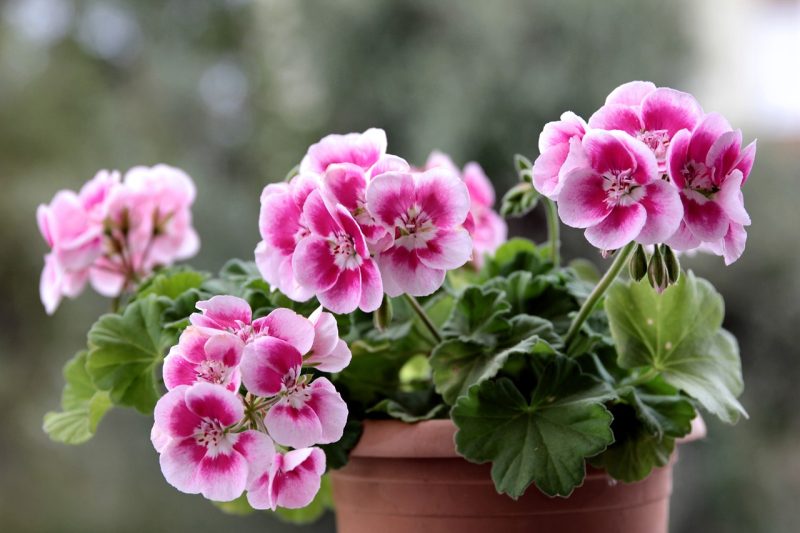
Geraniums offer vibrant blooms and fragrant leaves, thriving in well-draining soil under full sun or partial shade. They can be started from cuttings or potted versions in June.
These beloved annuals can tolerate heat and drought conditions, making them popular especially for containers. Regular pruning and deadheading stimulate new growth and continuous blooming, providing color throughout summer.
Dahlias
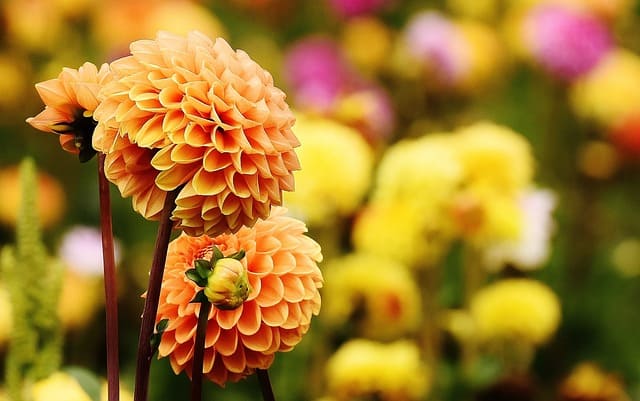
Dahlias offer one of the most spectacular displays of flowers in any garden, with shapes and colors that are incredibly diverse. While best planted as tubers in spring, you can still introduce potted dahlias in June.
They thrive in well-drained soil, enjoying temperatures of 70°F to 75°F. Ensure they receive sufficient sunlight and support taller varieties with stakes. Dahlias produce stunning blooms from mid-summer to fall, perfect for cut arrangements or garden display.
Herbs To Plant
Herbs are a fantastic addition to any garden, offering culinary versatility alongside their aesthetic appeal. June is an excellent time for planting various culinary herbs in Zone 6b. Here’s a detailed look into ten herbs suited for this season.
Basil
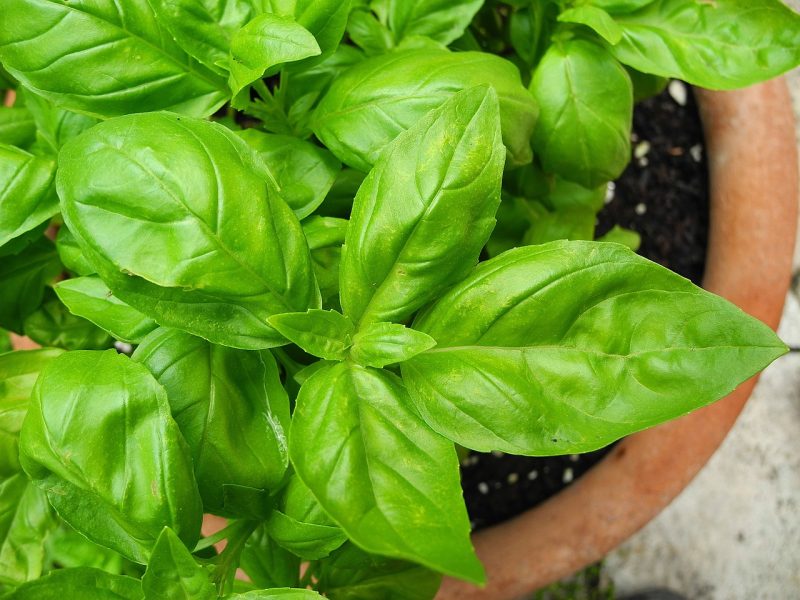
Basil is a warm-season herb that thrives in temperatures between 70°F and 85°F. In June, sow seeds directly in well-drained soil enriched with organic matter, using full sun for optimal growth. Basil grows best in warm soil, so ensure nighttime temperatures are above 50°F before planting.
This aromatic herb flourishes when regularly harvested, promoting bushy and healthy growth. In addition to its culinary uses—particularly in Italian dishes—fresh basil is an attractive addition to your kitchen garden with its fragrant, lush foliage.
Cilantro
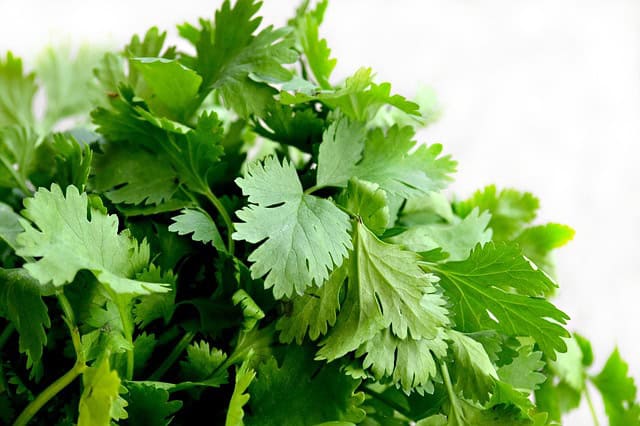
Cilantro prefers cooler conditions and can be sown in June for mid-to-late summer harvest. It germinates best in temperatures between 55°F and 75°F. Directly plant seeds in well-drained soil, keeping them moist while waiting for them to sprout.
Cilantro can bolt quickly in hot weather, so intermittent sowing every few weeks can lead to a staggered supply, providing fresh leaves year-round. Both the leaves and seeds (coriander) are used in a variety of culinary dishes, adding fresh flavors.
Dill

Dill is a versatile herb that thrives in temperatures of 65°F to 75°F. You can sow seeds directly into the garden in June, preferring well-drained soil and full sun. Dill loves the warmth, germinating quickly and developing tall stems reaching up to 3 feet.
This herb is commonly used for pickling but adds flavor to various dishes, fresh salads, and as an aromatic garnish. Dill also attracts beneficial insects to your garden, enhancing the ecosystem.
Oregano
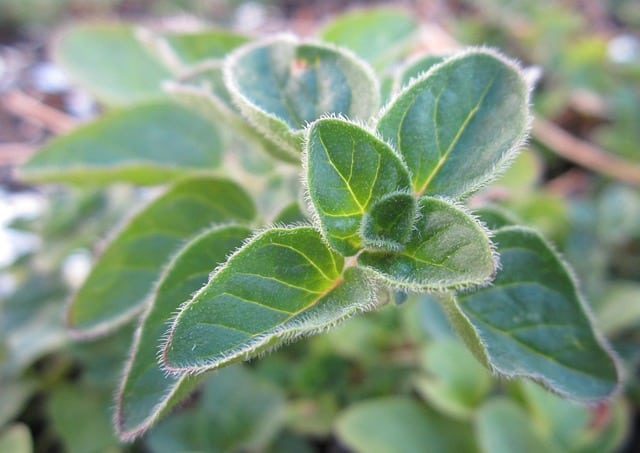
Oregano is a perennial herb that enjoys warm temperatures and full sun, commonly thriving between 70°F and 80°F. Plant in well-drained soil in June for robust growth. Oregano is drought-tolerant and can thrive in poor soils, making it ideal for low-maintenance gardens.
Regular harvesting encourages bushier growth, and its aromatic leaves can enhance Mediterranean dishes with flavor. This hardy herb is perfect for borders, herb gardens, or even as ground cover.
Thyme
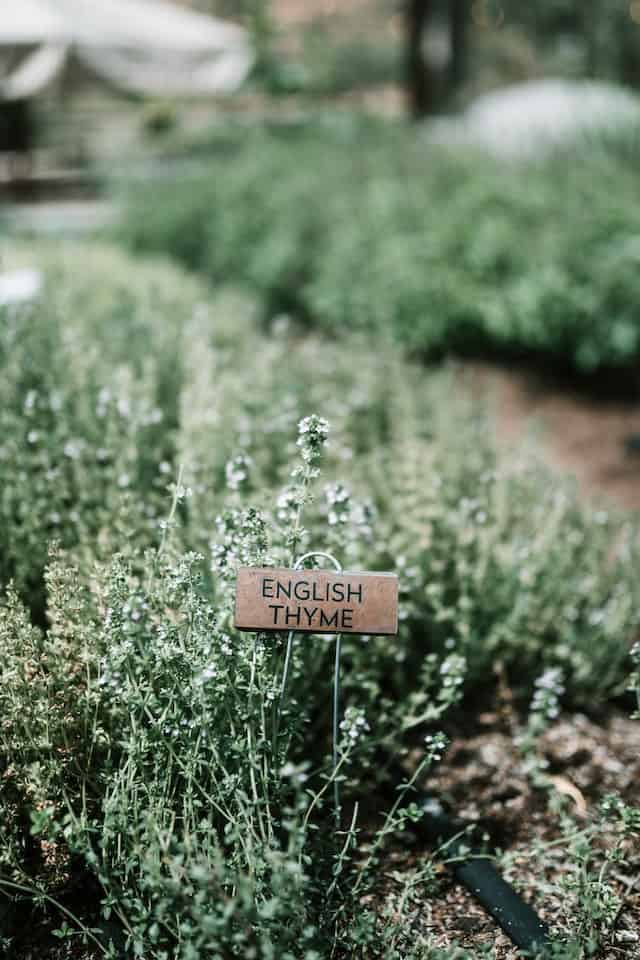
Thyme is a drought-tolerant perennial herb that thrives in well-drained soil and enjoys full sunlight. Ideal planting temperatures are around 70°F, so June is perfect for starting new plants.
Thyme can be spaced around 12 inches apart, and its compact growth allows for close planting. Fresh thyme adds flavor to numerous culinary dishes, and its attractive foliage also provides year-round garden interest as it is evergreen in mild climates.
Chives
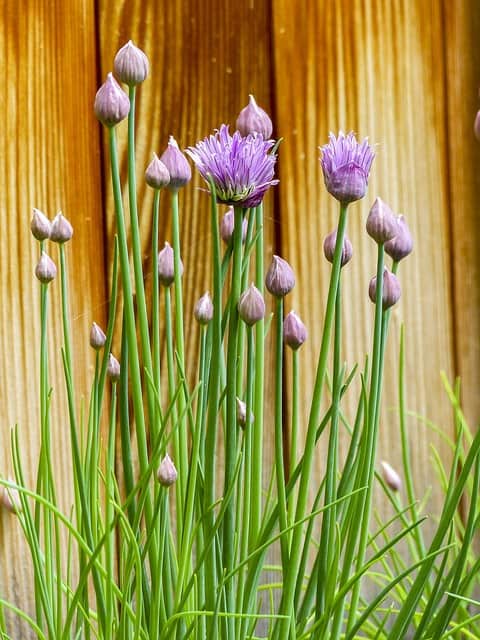
Chives are perennial herbs that thrive in temperatures of 60°F to 75°F. Plant chive seeds or transplants in June in well-drained soil, enjoying full sun or partial shade.
Chives add a mild onion flavor to dishes and their bright purple flowers are not only striking but also edible. They are a great ornamental addition to herb gardens and flower beds alike, and regular harvesting will keep your plants healthy.
Mint
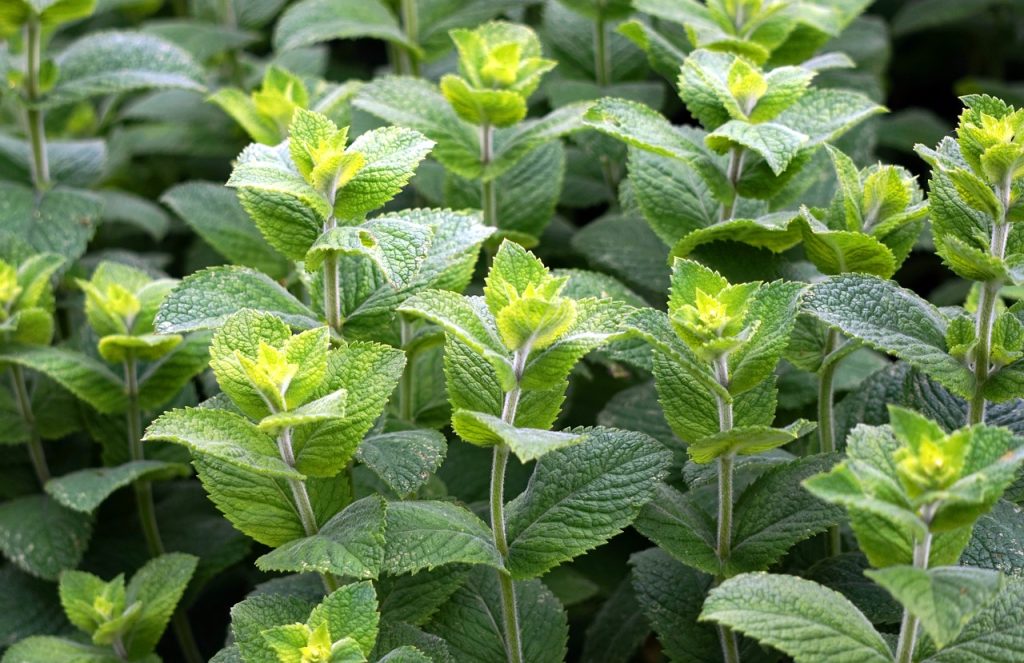
Mint is a vigorous perennial herb that prefers moist soil in full sun to partial shade. Plant established plants or seeds in June, as it can thrive in a wide range of conditions.
Mint’s invasive tendencies mean it’s best grown in containers or restricted areas. The aromatic leaves can be used in beverages, cooking, and desserts, providing refreshing flavor and aroma throughout the growing season.
Parsley
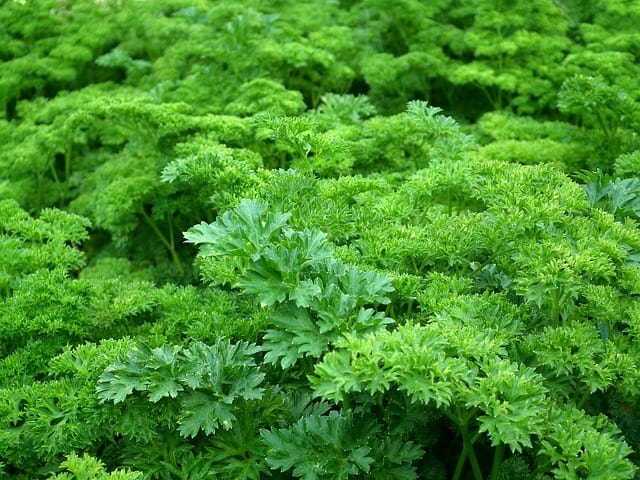
Parsley grows well in well-drained soil, preferring temperatures of about 60°F to 70°F. Sow seeds in June for a continuous supply through summer and into fall.
This biennial herb thrives in both full sun and partial shade, with regular watering needed for optimal growth. Parsley enhances the flavor of countless dishes and can also be grown in pots, making it convenient for kitchen use.
Rosemary

Rosemary is a drought-tolerant perennial herb that flourishes in warm conditions and benefits from full sun. June planting can involve starting new plants from cuttings or purchasing potted starts.
With its semi-woody structure, rosemary is an attractive foliage plant. Its strong fragrance and flavorful leaves complement various cuisines, making it invaluable in the kitchen.
Cilantro

Note that cilantro has been included above as well, and it’s worth reiterating its importance. Because of the quicker maturation time and cooler growing preferences, cilantro is especially popular for planting in early summer, allowing its flavor to be enjoyed fresh for much of the season.
Landscape Plants To Plant In June
June also provides a fantastic opportunity to enhance landscapes with a range of ornaments and shrubs. Here’s an insightful look at ten plants ideal for planting in Zone 6b, emphasizing their temperature tolerances and desirable planting dates.
Japanese Maple
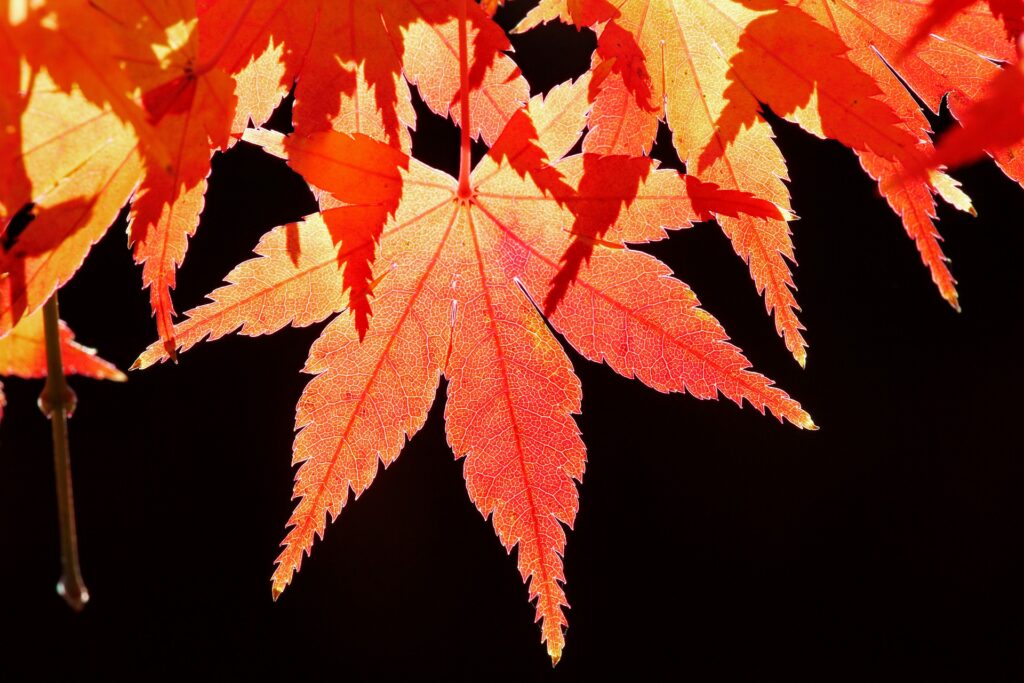
Japanese Maples (Acer palmatum) are treasured ornamental trees known for their graceful form and vibrant foliage. Plant in June when soil temperatures are consistently warm, ideally in partial shade with well-drained acidic soil.
These trees mature slowly, usually reaching between 10 to 25 feet in height, making them suitable for many gardens. Their spectacular leaf colors, ranging from deep purple to bright red, change with the seasons, providing year-round interest.
Hydrangea

Hydrangeas are celebrated for their large blooms and adaptability. In Zone 6b, early June is a great time to plant established shrubs in full sun to partial shade and well-drained soil.
Choose varieties like ‘Endless Summer’ to extend blooming periods, as they continue to flower throughout summer, often changing colors based on soil pH. Hydrangeas require regular watering, especially in hot months, and bring beauties to mixed shrub borders.
Ornamental Grasses
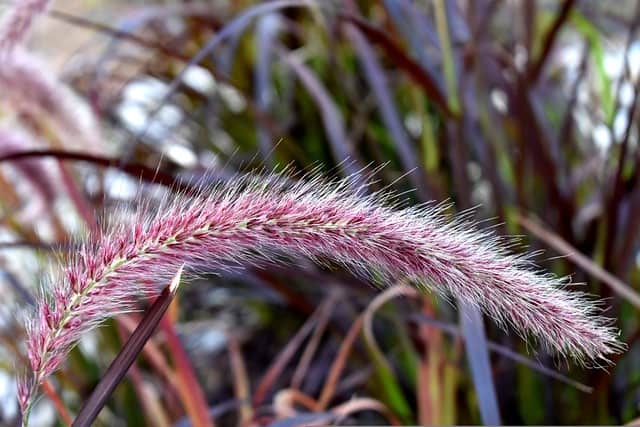
Ornamental grasses such as Miscanthus and Panicum can be planted in June when they thrive in warm temperatures, preferring full sun. These drought-tolerant grasses add texture and movement to landscapes and can be left standing over winter for visual interest.
Space them appropriately to allow their natural growth forms to shine. Ornamental grasses can serve as privacy screens and erosion control while providing habitats for local wildlife due to their dense growth.
Boxwood

Boxwood is a classic evergreen shrub that adapts well to trimming and shaping. June is suitable for planting these hardy shrubs in well-drained soil in full sun or partial shade.
Boxwoods are ideal for formal hedges or topiaries and can breathe life into garden landscapes throughout the year due to their rich green hue. Fertilizing and watering during the summer months will help establish roots and promote new growth.
Astilbe
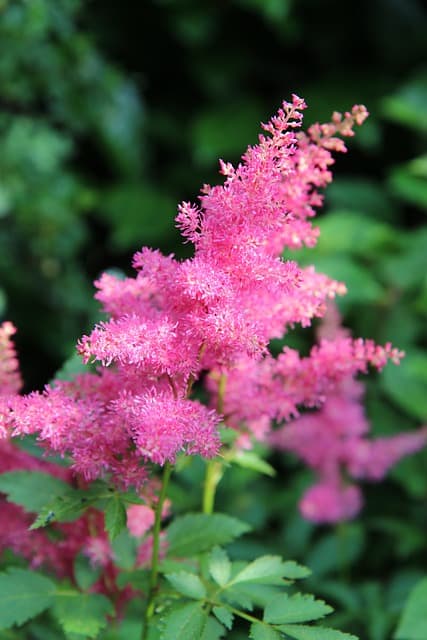
Astilbe is a lovely perennial that thrives in shady areas, blooming profusely from mid-summer to late summer. Plant astilbe in June in moist, well-drained soil and partial to full shade.
These plants produce delicate plumes of feathery flowers that come alive with color and texture, perfect for shaded woodland gardens. Keep the soil consistently moist for optimal flowering, encouraging good humidity levels in the surrounding environment.
Red Twig Dogwood
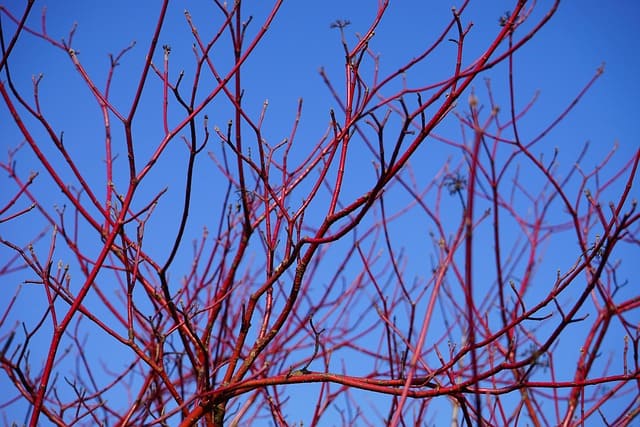
Red Twig Dogwood (Cornus sericea) is a versatile shrub known for its stunning red stems, especially during winter. Plant in well-drained, moist soil in full sun to partial shade in June.
These shrubs can reach heights up to 10 feet and provide excellent winter interest, contrasting beautifully with the snow. They are also excellent for wildlife habitats, with flowers providing nectar for pollinators and berries for birds.
Russian Sage
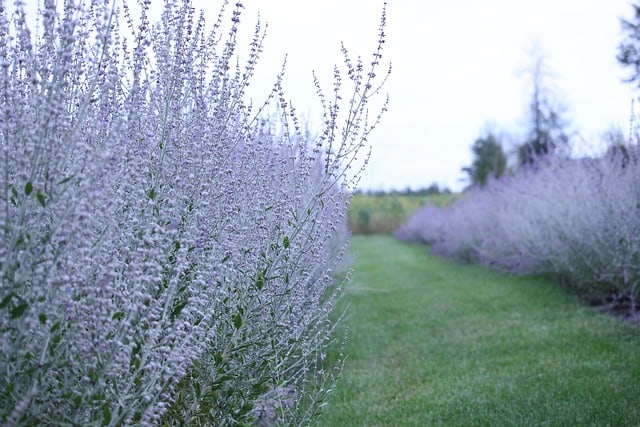
Russian Sage (Perovskia atriplicifolia) is a drought-tolerant perennial known for its silvery foliage and lavender flowers. June is perfect for planting Russian sage in full sun and well-drained soil.
These hardy plants are ideal for sunny borders and require little maintenance once established, offering long-lasting summer blooms that attract butterflies and pollinators to your garden.
Creeping Thyme
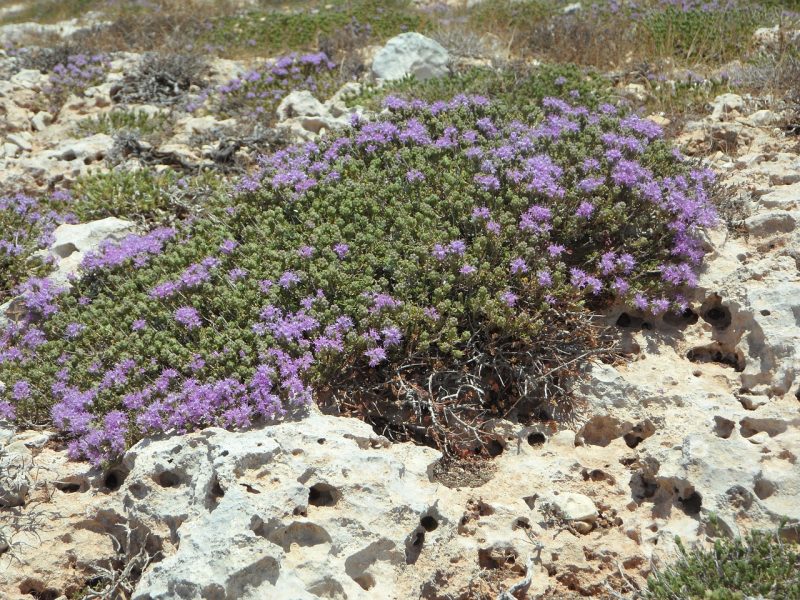
Creeping Thyme is an aromatic ground cover that thrives in well-drained soil and full sun. Plant in June further afield or in rocky areas, allowing space for them to spread.
This low-growing perennial can tolerate foot traffic and boasts delightful flowers in late spring to early summer, attracting beneficial pollinators. Its fragrant foliage also adds to the sensory experience in the garden.
Daylily
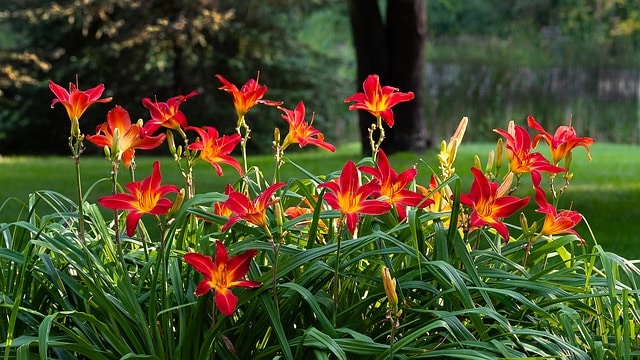
Daylilies (Hemerocallis) are resilient perennials that thrive in sunny locations and tolerate a range of soil types. Plant them in June for vibrant summer blossoms, adapting seamlessly to various garden designs.
These hardy plants can produce blooms in many colors and forms, adding visual interest to your landscape. Once established, daylilies require minimal effort and will continue to flourish throughout the summer.
Coneflower
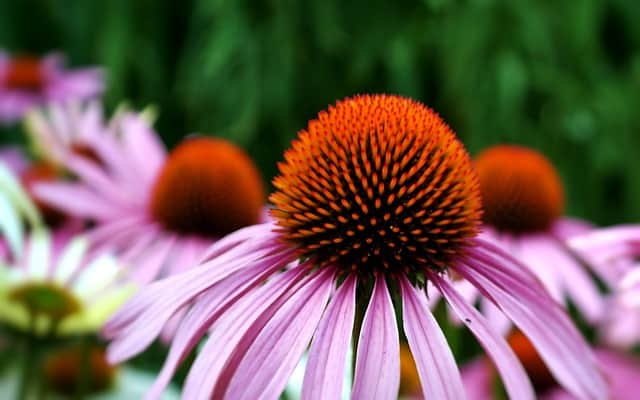
In addition to their role in flower beds, coneflowers are versatile landscape plants. They thrive in sunny locations with well-drained soil. Plant them in June to introduce blooms that will endure through summer and into fall.
Coneflowers not only create stunning visual appeal but also attract butterflies and birds. Their hardiness makes them suitable for mixed borders and ecological landscaping, where they can help support local wildlife populations.



